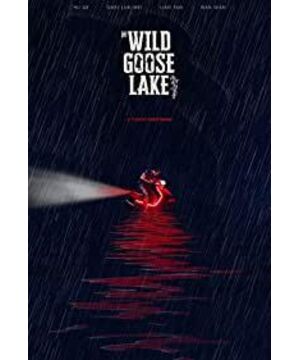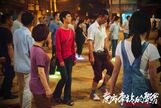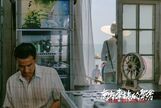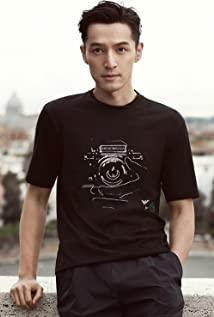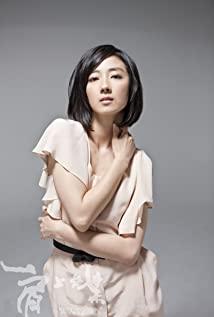Diao Yinan directed "The Party at Southern Station" to create a "film noir" atmosphere, especially the exaggerated shadows - German expressionist films in the 1920s used lights/shadows to create an atmosphere of suspense and terror (such as "Dr. Caligari's" Cabin", "Nosferatu", etc.), and later some German lighting engineers, photographers, directors, etc. came to Hollywood, which directly or indirectly influenced the American "film noir" image style. It is also said that Hitchcock's use of shadows in suspense films also stems from his experience in filming in German studios when he was young. In addition, American "film noir" is about crime and redemption. There are always seductive and flimsy beauties who will be punished (usually killed) in the end, and it is often interpreted as the psychological frustration projected by men after "World War II". Female Disorders" on screen.
Why the "film noir" that has basically disappeared in the United States gave birth to "flowers of evil" in China is also a topic worth thinking about: the anxiety of the crowd, especially men? The form of anger distribution? After "Fireworks in the Day", "The Gathering at Southern Station" has the shell of a crime film about the most grassroots personnel, wrapping the heart of literary middle-aged in the clouds - a continuation of some low-cost independent/underground films in my country since the mid-1990s Tradition - Some people make fun of movies like "police prostitute underworld, dark lights and long shots". "South" follows the first half of the sentence (theme) and upgraded the second half (the style/style) to become a commercial film with exquisite images and sounds and a bit of literary color.
What impressed me most about "South" was that some of the scenes were deja vu, because they borrowed, quoted, and repurposed many other crime/film noir/art-house scenes. The most obvious is the German director Fritz Lang's first sound film "M is the Murderer" (1931), a classic that will never tire of watching. Written by Long and his wife, Thea von Harbou, the film is about cops and thieves splitting up in search of a notorious child-killing serial killer. The thieves go for it because 1) the cops do raids all over the city from time to time, making it impossible for them to do business 2) the thief thinks he is morally superior to the pervert who kills children. In "South", of course, the reasons are different, but the motivation of the story is that both the police and the underworld are looking for Zhou Zenong, the latter for personal revenge and 300,000 reporting fees. In "M", 1) the meeting of the police and the meeting of the thief are cross-cut (the first time I watch it carelessly and I can't even tell which one is which); 2) the police look at the map and group the areas and comb the areas, and the thieves also use the In the same way, even the monitoring network is more strict (using beggars, precise to every street intersection); 3) Lang used real criminals to play himself, which made it very realistic, and also led to the police arriving at the scene and arresting more than 20 people during the filming. people. This narrative technique and acting method are used in "South".
The difference is that "M" 1) uses delicate shots and sounds, especially the sound design in the early stage of sound films, making it a textbook model. 2) Surprising sense of humor and helplessness intertwined with social criticism. 3) The details are extremely fine and ingenious. Every word, every move, every frown and smile designed for different characters are all lifelike. Even if the little character only appears in one scene, it is unforgettable. In retrospect, I can still laugh or sigh with emotion for a while: For example, when the policeman Lohmann heard that the thieves caught the murderer and dropped the cigarette holder on the table, he quickly went to the next door to wash his face and came back to try the case full of energy; for example, the unlucky master lockpicker was thrown under the big hole in the ceiling by his buddies who fled in a hurry , climbed up the rope and found that he was surrounded by police (there is a similar scene at the end of Polish director Vajda's "The Sewer", the resisters are surrounded by Nazis, then there is no sense of comedy and complete despair). In short, the lively market spirit and Jianghu spirit in "M" are lacking in "South". Although the scenes were shot in the most "marketplace" places, the characters should be the most "jianghu" characters. The lack of texture and details of life, as well as the restraint that can't let go of one's body, cause the stacking of symbols to not naturally produce chemical reactions.
Some other scenes that I stumbled upon that I don't know how to pay tribute to or coincidence: Hu Ge/Zhou Zenong bandaging himself naked, reminds me of a similar scene in Yang Yanjin's film "Street" (1981), but there is Zhang Yu wrapping a white cloth in a circle. Dress yourself up as a boy.
Gui Lunmei/Liu Aiai did not explain when they were talking under the bridge and were suddenly silenced by a passing train. This kind of treatment abounds in Buñuel's film "The Phantom of Freedom" (1974), but it is a mockery of the middle class.
The unease of an abandoned playground and multiple mirrored figures in the pursuit and escape, Orson Welles' "Miss Shanghai" (1947) is almost at its peak.
The spectacle and seemingly allegorical scene of the shootout at the zoo is also reminiscent of Li Yu’s first feature film, This Summer (2001), where a fugitive escapes to the zoo to engage in a shootout with the police… …
Just like the Northeast in "Fireworks in the Day", Wuhan was used by "South", turned into a spectacle and exotic, and together with the people there, they were abstracted into audio-visual symbols, completing the "North" by an elite director who had a heart for the market. Or "southern" black fantasy.
View more about The Wild Goose Lake reviews


